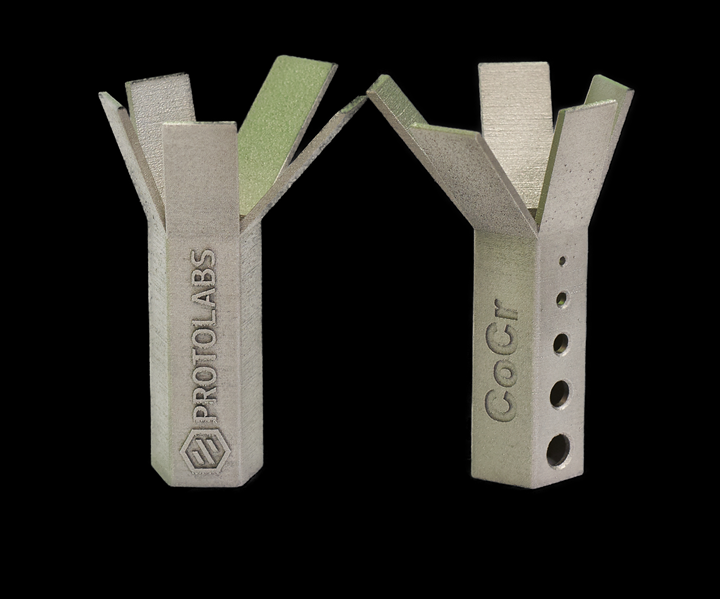Protolabs Launches 3D Printed Cobalt Chrome
Protolabs has launched 3D printed cobalt chrome, a new material resistant to heat, wear and corrosion for use across multiple sectors.

The UK’s fastest digital manufacturer has launched 3D printed cobalt chrome - a new material from Protolabs - resistant to heat, wear and corrosion for use across multiple sectors.
Protolabs has launched 3D printed cobalt chrome, a new material resistant to heat, wear and corrosion for use across multiple sectors. The super alloy could enable the oil and gas industry to design and develop cobalt chrome parts not previously possible, with the aerospace sector also expected to benefit due to cobalt chrome’s high strength to weight ratio.
Hard-wearing cobalt chrome is well known for its excellent corrosion and creep resistance. It can withstand temperatures of up to 600oC and its low nickel content gives it excellent biocompatibility making it ideal for orthopaedic and dental applications.
The 3D printing process used by Protolabs, direct metal laser sintering (DMLS), can produce very fine resolution parts down to a minimum feature size of 1.00mm with a minimum wall thickness also of 1.00mm.
DMLS uses a computer-controlled, high power laser beam to melt and fuse layers of the metallic powder together. The company can produce parts using the process in as little as a day, which they claim makes them the fastest digital manufacturing company in the world.

Protolabs' 3D printed cobalt chrome service.
Andrea Landoni, 3D printing product manager for Protolabs, says: “Cobalt chrome is one of the toughest materials known and can be polished to an extremely smooth surface. ” Landoni adds: “One of the problems of cobalt chrome is that it is so hard wearing that it is very difficult to produce parts from it using other processes such as CNC machining. The properties of parts produced by DMLS are also equal to or better than those of wrought materials and the process is ideal when the geometry or structure of a part is simply not possible using any other process.
Related Content
-
Additive Manufacturing Versus Cavitation
The design freedom possible with laser powder bed fusion (LPBF) metal 3D printing is making it faster and easier to produce complex anticavitation devices for valves.
-
Aircraft Ducts 3D Printed in Composite Instead of Metal: The Cool Parts Show #68
Eaton’s new reinforced PEKK, tailored to aircraft applications, provides a cheaper and faster way to make ducts compared to formed aluminum.
-
3D Printing with Plastic Pellets – What You Need to Know
A few 3D printers today are capable of working directly with resin pellets for feedstock. That brings extreme flexibility in material options, but also requires greater knowledge of how to best process any given resin. Here’s how FGF machine maker JuggerBot 3D addresses both the printing technology and the process know-how.













